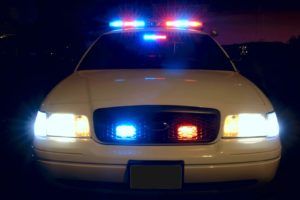 Even with interlock ignition device expansion in 2016, Maryland the state and the rest of the country still saw an increase in DUIs. As such, Maryland has developed a five-year plan to reduce by half the state’s DUI numbers: the 2016-2020 Strategic Highway Safety Plan (SHSP). Implementation of the Maryland SHSP involves the collaboration of professionals, each with a different expertise of transportation planning, engineering and operations, public outreach and education, legislation and law enforcement, and emergency medical services. Each of these disciplines has a critical role to play in decreasing Maryland DUI numbers, defining the optimal combination of countermeasures to continue to reduce the number and severity of traffic crashes.
Even with interlock ignition device expansion in 2016, Maryland the state and the rest of the country still saw an increase in DUIs. As such, Maryland has developed a five-year plan to reduce by half the state’s DUI numbers: the 2016-2020 Strategic Highway Safety Plan (SHSP). Implementation of the Maryland SHSP involves the collaboration of professionals, each with a different expertise of transportation planning, engineering and operations, public outreach and education, legislation and law enforcement, and emergency medical services. Each of these disciplines has a critical role to play in decreasing Maryland DUI numbers, defining the optimal combination of countermeasures to continue to reduce the number and severity of traffic crashes.
Emphasis Area (EA) strategies will drive implementation, and each strategy will be supported by a series of action steps for Maryland DUI reduction. The Impaired Driving EA Team will implement the following strategies:
- Improve the availability, quality, collection, and use of data to support impaired driving enforcement, adjudication, programs, and initiatives.
- Enhance and improve enforcement of Maryland DUI driving laws.
- Enhance and improve the prosecution and adjudication of DUI cases.
- Investigate and foster the use of technologies and best practices to support impaired driving countermeasures.
- Conduct outreach initiatives including, but not limited to, education, training, and media programs to reduce impaired driving.
- Investigate and promote policies and legislation aimed at reducing impaired driving.
Impaired driving is one of the state’s highest priority traffic safety issues, on average 170 people have been killed each year for the past five years due to alcohol- or drug-impaired driving.
MDOT and its partners reminded drivers to “make a plan” before any trip:
- Always buckle up! It’s the single most important way to save your life in a crash.
- ADAPT your driving behavior. Leave a little early. You won’t feel the need to speed or drive aggressively.
- Look twice for pedestrians, bicyclists, and motorcyclists, especially when changing lanes or approaching an intersection.
- Use crosswalks and bike lanes. Be visible on the road. Wear bright clothing, and cross where drivers expect to see you.
- Move over when approaching an emergency vehicle or tow truck using visual signals. If you are unable to move over, slow down.
- Have a safe and sober ride. Use a designated driver, call a cab or ride share, or use public transportation.

